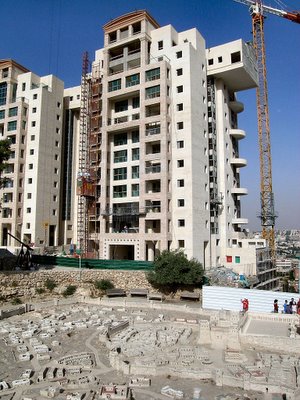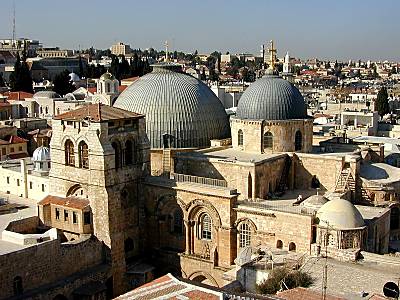I’ve been talking about this for much of the last year in BiblePlaces newsletters, but now it’s in process. The Holyland Hotel model is leaving the Holyland Hotel, in route to the Israel Museum.
This recent Haaretz article certainly has a catchy first sentence, if you don’t realize what she is talking about.
At the end of January, the Temple Mount will be sawed into pieces and carted away. Not the real Temple Mount, of course, but its miniature model on the hillside next to the Holyland Hotel in southeast Jerusalem. The mountain and the temple compound built by King Herod are part of a model of Jerusalem in 66 C.E., on the eve of the revolt against the Romans that ended in the destruction of the city.
Last week I was at the museum and peeked over the wall and saw that parts of the city had been put in place. But it still looked like parts of the foundation were incomplete. It will take some time, I imagine. Hopefully it will be open before the summer tourists arrive.
 The model is moving because of the construction of high-rise apartment buildings near it.
The model is moving because of the construction of high-rise apartment buildings near it.
